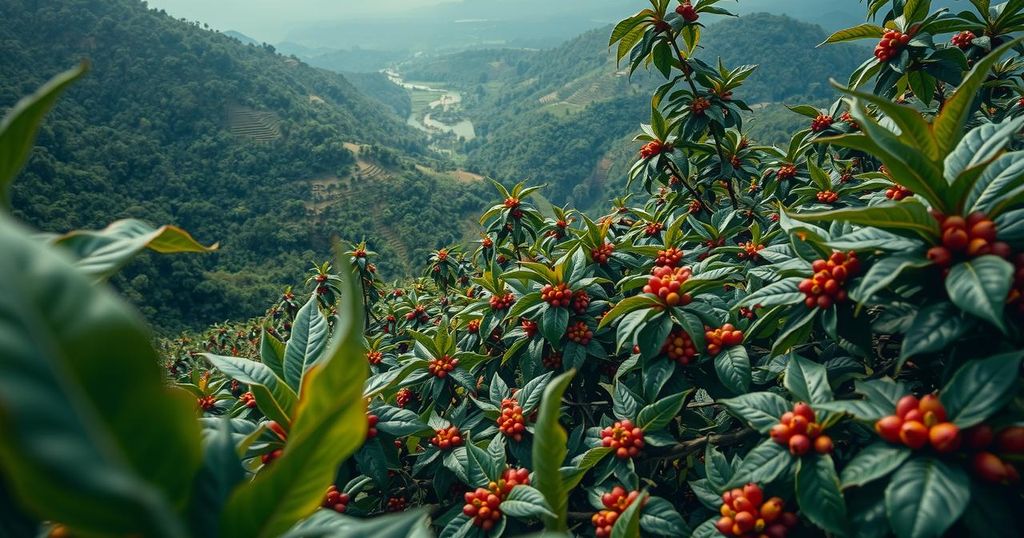Climate Change Fuels Coffee Price Surge Amid Drought in Major Producing Countries

Coffee prices have reached a 47-year high due to severe droughts affecting Brazil and Vietnam, the world’s largest coffee producers. Climate change and the El Niño phenomenon have caused alarming crop losses, threatening future coffee supplies. By 2050, coffee-growing regions may dwindle by half, impacting farmers’ revenues and prompting the industry to explore alternative sourcing strategies.
Coffee prices have recently reached unprecedented levels, driven by severe drought conditions affecting Brazil and Vietnam, the leading producers of coffee globally. These droughts, exacerbated by El Niño and climate change, have resulted in significant crop losses, which may influence future coffee supplies. Experts predict that by 2050, suitable regions for coffee cultivation may shrink dramatically due to rising temperatures—jeopardizing the revenues for many farmers in developing countries.
In Brazil, the National Center for Monitoring and Early Warning of Natural Disasters reported that approximately 60 percent of the region is currently under severe drought stress, marking an intense period for the country. The warming effects of climate change and deforestation have disrupted traditional rainfall patterns, further diminishing moisture availability for coffee plants. Similarly, Vietnam faces threats not only from ongoing droughts but also past typhoons, complicating recovery efforts for coffee growers.
Although recent rains in Brazil brought some hope, farmers remain skeptical about the recovery of crops. Coffee arabica—the primary species used in consumer-grade coffee—is especially at risk from climate fluctuations. With rising temperatures pushing agricultural conditions out of the plant’s optimum range, other regions may emerge as viable coffee producers, but infrastructure in these areas remains limited.
The market has felt the repercussions, with arabica bean prices soaring nearly 70 percent this year, prompting industry leaders to adjust their pricing strategies and consider diversifying their coffee sources to mitigate future risks. Establishing operations in countries such as Guatemala and Costa Rica reflects attempts to harness new opportunities amidst changing climates. Additionally, alternative coffee substitutes made from grains such as chickpeas and barley are emerging to address potential shortages.
This evolving scenario illustrates the urgent need for industry-wide adaptations due to ongoing climate change effects. As coffee remains a vital agricultural sector, it serves as an indicator of broader climatic impacts on agriculture. Key leaders in the coffee sector emphasize that the ongoing droughts and subsequent challenges highlight the immediate need for strategic interventions to ensure sustainability.
The article outlines the impact of climate change on coffee prices, particularly emphasizing how extreme weather events, such as droughts in Brazil and Vietnam, are disrupting the global coffee supply chain. Both countries are significant coffee producers, and their agricultural practices and challenges provide insight into broader environmental trends. Rising temperatures, deforestation, and climate-related phenomena such as El Niño are collectively affecting coffee production and farmers’ livelihoods. The discussions also highlight the various strategies coffee companies are implementing to adapt to these shifts, reflecting a significant transformation in the coffee market.
In conclusion, the extreme droughts in Brazil and Vietnam present a serious concern for the global coffee industry, resulting in soaring prices and potential future shortages. As the effects of climate change intensify, coffee growers and industry leaders are urged to adapt and innovate if they wish to secure a sustainable future for coffee production. The urgent need for diversification of sources and exploration of alternative crops becomes imperative, given the current climate trajectory.
Original Source: insideclimatenews.org






